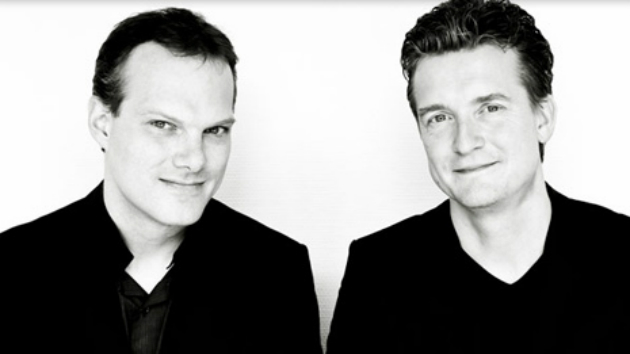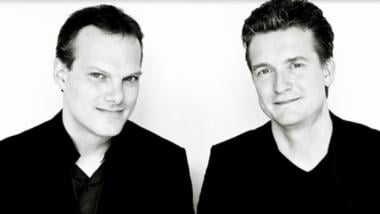
Violinist Christian Tetzlaff is apparently a fan of big gestalt programs, in which he busts out an entire category of music in one evening. Five years ago, he played all six of J.S. Bach’s sonatas and partitas at Zellerbach Hall in Berkeley. On Sunday, he performed the complete Brahms violin sonatas on the same stage.
Other than demonstrating Tetzlaff’s amazing stamina, these exhaustive undertakings provide an in-depth exploration of a composer’s language. But they do not make for the most dynamic and varied concerts. Realizing the danger of monotony (there is such a thing as too much Brahms), Tetzlaff, along with pianist Lars Vogt, separated the sonatas with two performances of Anton Webern’s Four Pieces. Yes, they played it twice — once between the first and second sonatas, then again right after intermission, before the third sonata.
The Webern Pieces are scarcely five minutes long, while the Brahms sonatas stretch on for almost half an hour each. Yet the Webern was more than just an atonal palate-cleanser. With these succinct statements, Webern covers almost as much ground as Brahms in a fraction of the notes. Webern’s compositions contain kernels of musical gestures that other composers can take hours to dress up and expound upon.
Webern starts with barely audible tones, clawing to fortissimo and dissipating to a faint hush in a matter of seconds. It is like one big sigh going from nothing to everything and back to nothing. Tetzlaff and Vogt played these gestures with a natural understanding and devotion. The freedom from harmony and lengthy formal designs puts the focus instead on colors and sound effects.
Tetzlaff is known for his championing of atonal music — he specializes in the concertos of Arnold Schoenberg and Alban Berg — and for him the transition from the Brahmsian Viennese School of rich elegance to the early 20th century Viennese School of stark minimalism (not minimalism in the Philip Glass sense) is more seamless than it seems. After the second time around with Webern, the duo continued on to Brahms attacca — without pause. They practically melded together into one piece. After the second time around with Webern, the duo continued on to Brahms attacca — without pause. They practically melded together into one piece.
As for the Brahms, it was played with painstaking detail and understated passion, especially in the first two sonatas. Tetzlaff’s interpretation of Brahms’ indication “piano mezza voce” was to play with a barely audible, hollow sound. Crests of phrases where violinists traditionally stretch out the timing were instead carried forward with incisive momentum. Instead of bringing out the gorgeous melodic lines, Tetzlaff instead found the same hushed colors that are used by Webern. In the final sonata, he let loose with more fiery, Romantic-era vibrato and deep tone. This is the fourth time that I have heard Teztlaff play — his performances stimulate the brain more than the heart. Vogt’s solo piano contributions brought out a more relaxed and warm sound in the few phrases where the violin rests.
As an encore, the duo played the last movement of Dvorak’s Sonatina. It was a ray of playful sunshine in an otherwise heavy and dreary concert.

